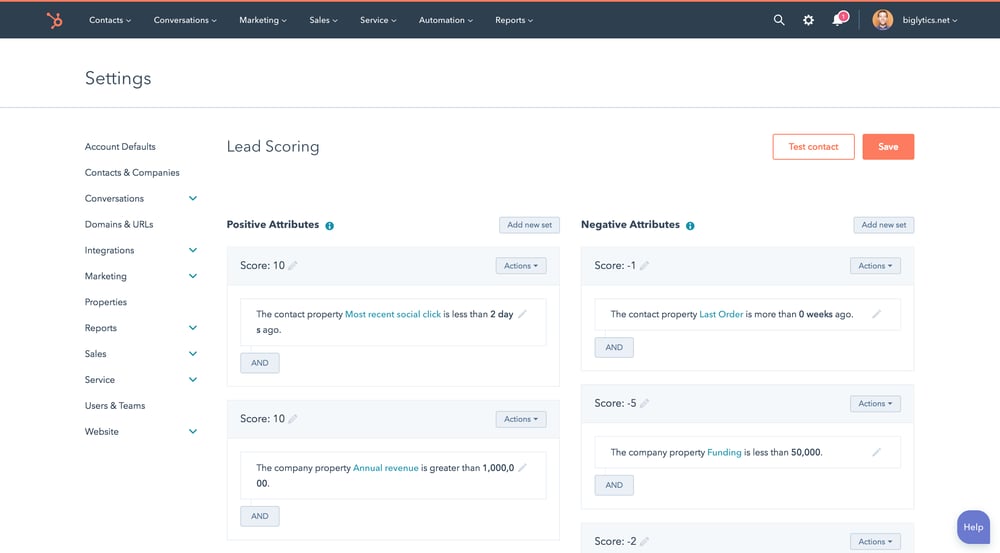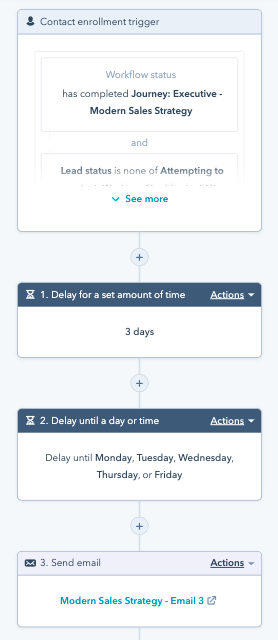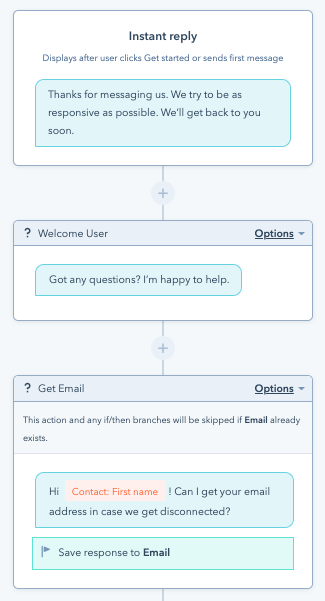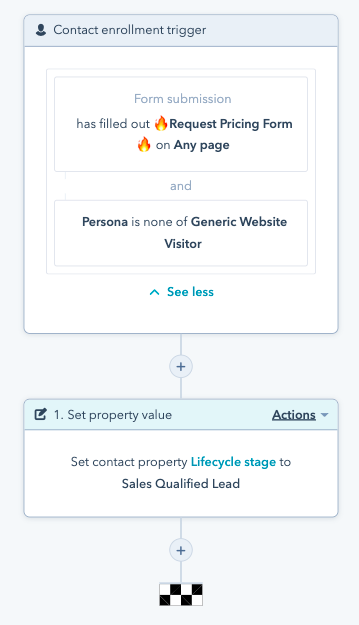Marketing Automation usually has a reputation of being difficult to set up and more of a hindrance than its worth. That couldn’t be further from the truth. Essentially, marketing automation can help streamline your marketing efforts and make your department more efficient through powerful automated actions.
Marketing automation software can improve marketing and sales productivity, increase lead quality, and guide future campaigns. Here's what you need to know before adopting a marketing automation platform.
Contents
Importance of marketing automation
What are the benefits?
Types of automation
Mapping marketing workflows
What is the importance of Marketing Automation?
HubSpot defines Marketing Automation as the following:
Marketing Automation refers to the software that exists with the goal of automating marketing actions. Many marketing departments have to automate repetitive tasks such as emails, social media, and other website actions. The technology of marketing automation makes these tasks easier.
- HubSpot
In an ideal world, Marketing Automation nurtures prospects with highly personalised, useful and relevant content. Through workflows, marketers can filter and monitor contacts and their stages in the buyer’s journey to move them through the sales funnel without being overwhelming or impersonal.
With intelligent branching, within workflows, Marketing Automation considers how a prospect interacts with your communications and content to segment your contacts database into ideal leads while filtering out unqualified leads. Ultimately ensuring your messaging is reaching the right people with the right content at just the right time.
Benefits of Marketing Automation:
1. Multi-channel targeting
Today’s customers are present on multiple digital and social media platforms, and use these platforms to source information, products and services. As a result, marketers need to be targeting prospects and potential customers across these different digital channels to increase their rate of customer acquisition.
2. Personalised communication through lead nurturing
As your contacts interact with your website and content, your possibilities in your nurture automations open to many new avenues. The more data you collect on your contacts the further you can segment and personalise the content you are presenting to them. A tailored experience will greatly improve your conversion rates and customer retention.
3. Build detailed customer profiles
One of the biggest benefits of Marketing Automation is that you are able to gain a better understanding of your leads. With features such as visitor tracking, you can track what web pages a lead has visited, what emails they are opening and engaging with, what links they have clicked on and which forms they have filled out.
This allows you to segment your contacts database using all of this tracked data. Marketing Automation gives you greater insight into what your leads are looking at on your website. You can then use this collected data to improve your digital marketing campaigns and build longer-lasting relationships with customers and leads.
4. Align and enhance coordination between sales and marketing teams
With features like lead scoring within Marketing Automation platforms, marketers are able to concentrate their efforts on the most qualified leads. This score is based on a lead’s activity on your website and engagement with your communications. When a lead reaches a certain value, an automation workflow can trigger action by your marketing team or sales representative.
With the alignment of both the sales and marketing teams, leads can be more easily moved through the whole marketing funnel. In fact, marketing automation can lead to a 14.5% increase in sales productivity and a 12.2% reduction in marketing expenses. (Invespcro)
5. Detailed reporting
Marketing Automation platforms offer you in-depth analytics and reporting capabilities. You can effectively measure how successful your digital marketing campaigns have been and what kind of customers you have attracted in the process. With Marketing
Automation solutions, you are provided with detailed graphs, statistics and other pertinent data that you can analyse and use in optimising future projects and campaigns.
Types of marketing automation workflows
Lead scoring
Setting up lead scoring does not have to be a complicated process. A well mapped out marketing strategy and buyer’s journey will aid you in mapping out a lead scoring system.
Based on your contact’s engagement with your content and emails, workflows can monitor this activity and apply scores accordingly. Well mapped out scoring will filter your top contacts for sales to engage with.

Email follow-ups
Email workflows triggered from activities alleviate the workload of your marketing and sales teams. They can be set up to send emails after a trigger event like downloading an asset or viewing key pages on your website, like a pricing page or key service page.

Live chatbot messaging
Implementing a chatbot on your website helps you connect with your website visitors in real-time, even when you are not available, and route them to helpful content or landing page. Having a 24/7 live chatbot that can imitate your best team member will help you to convert new leads, close more deals, and provide better support to your customers.

User journeys and segmentation
Segmentation is key in all of your marketing automation efforts. Split your contacts based on certain criteria and send them the content that is relevant and helpful to them. Segmentation helps you personalise your content and workflows - which in turn optimises your automations for success.

Mapping marketing workflows
Start/entry points
Identify the key actions your visitors will take to trigger your workflows. Will it be views of key web pages, interacting with a social ad, or submitting a form? These actions will serve as the initial point of contact on which you base the rest of the flow.
Lead qualification process and criteria
As we have mapped out already, we need to filter out the leads that come into the workflows. Build the criteria of each of your personas into the various entry points of your workflows to only let the right ones into the relevant flow.
This criterion can be expanded and refined further down the flow and as new information about the lead is entered. Their actions and habits can all be tracked in a lead score to better qualify leads for sales. Bear in mind that you will need to segment your leads as their profiles develop. Doing so will help you put an end to bulk messaging and create detailed lists across all of your criteria.
Frequency
How often are you going to be sending messages to your leads? This does not need to be a rule that cannot be broken, but you’ll need to define at which point a lead is not interested or when they should move to the next phase based on their interaction.
Consider your product or service, and how long the typical buyer cycle is. Also, map out the frequency per lifecycle stage, as each lead may enter the funnel at different stages.
Final thoughts
When leads feel like they are being communicated to more personally, they are more likely to convert into customers. Marketing automation helps you reach more customers and provide them with a personalised experience that nurtures them to the next stage in their journey.
The benefits speak for themselves, marketing automation steps in and gives marketers superpowers. For more information on how to apply marketing automation with Inbound Marketing, download this guide.





